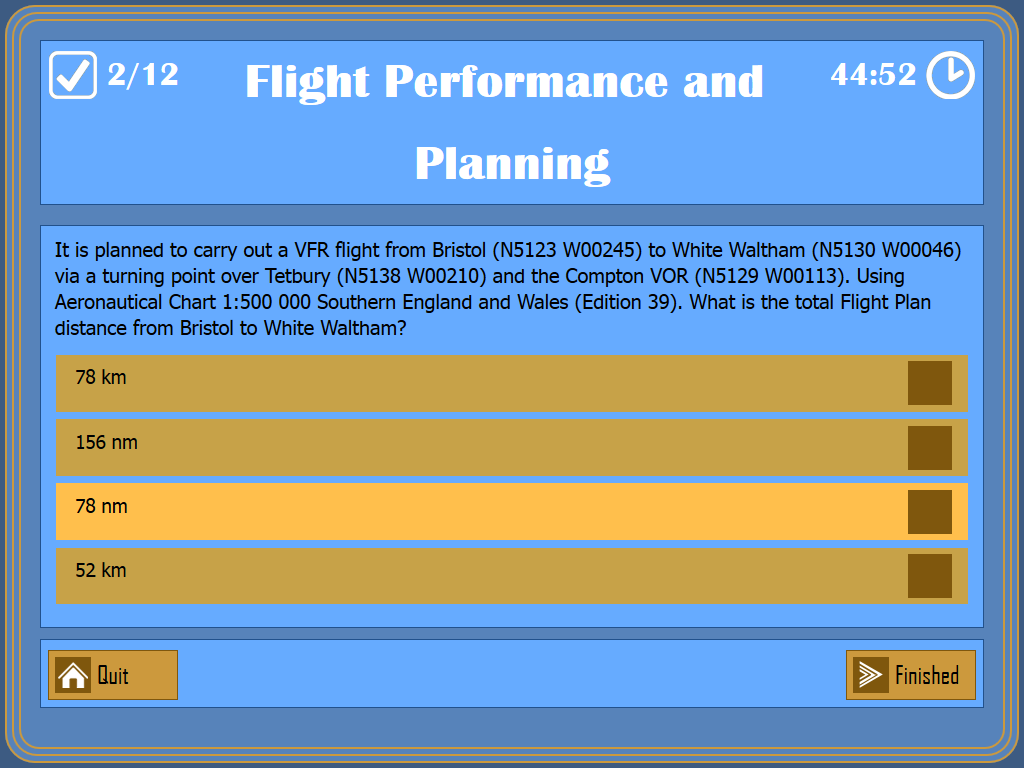PPL Flight Performance and Planning Exam
Pre-flight planning entails quite a diverse list of tasks such as calculation of headings, navigation plots, weight and balance calculations, as well as assessments of weather and any special circumstances affecting the flight in question such as danger areas along or near the intended flight path.
The Flight Performance and Planning course covers some of these elements and overlaps with the Navigation and Radio Aids course to some extent, in that this subject requires you to read aeronautical charts and interpret their symbols whilst Navigation expects you to plan your route from A to B.
The flight performance part of the subject covers calculation of weights and balances. It often comes as a surprise to student pilots at how little carrying capacity a light aircraft often has, particularly those used to train in. Adequate planning is essential to ensure that the plane you're intending to fly is not too heavy to take off, or that any weight on-board is balanced sufficiently so as to not affect flight controls, and finally to ensure that you have enough fuel to reach your destination – plus enough to deal with potential diversions or other problems. Not only that, but you need to be sure that when you get to the other end, you have enough runway to be able to land…
As with Navigation, the Flight Performance and Planning exam requires a certain amount of in-exam calculation using the flight computer. The sums are generally of the kind that would be quicker on a pocket calculator, but the course requires that a pilot is capable of performing them without electronic aids.
The time allowed for the exam is 45 minutes and it contains 12 questions, of which 9 must be answered correctly to pass. As with Navigation, this is one of the longer and more difficult exams and, although much of the subject matter overlaps, it's such a large subject that it's not easy to take both of them in the same sitting unless you are able to dedicate quite a bit of time to study and revision.
As with the other eight subjects, the PPL Exam Tutor application contains extensive revision notes and a question database that allows you to take multiple mock exams. If you try the free Air Law tests and revision content, we're sure you'll see how useful it can be in helping with the other exams.
The PPL Navigation Trainer App has been designed to help with the calculation side of the exam, and with using the flight computer in planning real flight exercises as the skills you use for the exam will need to be applied to your flying lessons. The Nav Trainer application contains a simulated flight computer and generates test calculations such as fuel volume to weight conversions which are tested in the Flight Performance and Planning exam.
 An example of Flight Performance and Planning revision content in PPL Tutor
An example of Flight Performance and Planning revision content in PPL Tutor
 An example Flight Performance and Planning exam question in PPL Tutor
An example Flight Performance and Planning exam question in PPL Tutor